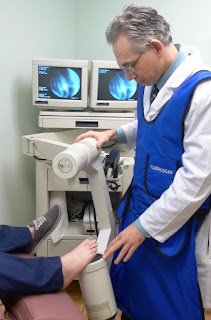The objective of a podiatrist is to provide the convenient
solutions to the patient’s issue. This
is why podiatrists never recommend foot surgery as the first option to treat
any condition of the lower extremities. The main reasons for this decision
include medical complications, surgery expenses, psychological stress, longer
recovery time, etc. Perhaps the most difficult foot surgery for both the
patient and podiatrist is foot amputation.
Even among foot surgeries,
amputation of any part of the foot is not encouraged unless there is no other
option. You can easily find a reliable podiatrist Crown Point if that is close
to your residence for consultation about your foot condition. It takes a lot of
preparation, both physical and mental, for the patient before they undergo foot
amputation. Counseling and physical therapy is highly recommended by renowned
podiatrists after foot surgery. There are often great support groups you may
join to make this experience less taxing on you. It takes several weeks for the
patient to get accustomed to living without a whole foot and wearing a
prosthetic. Phantom limb pain is pretty common among those who have undergone
foot amputation so drugs and counseling are frequently suggested by podiatrists
to cope with this.

No comments:
Post a Comment